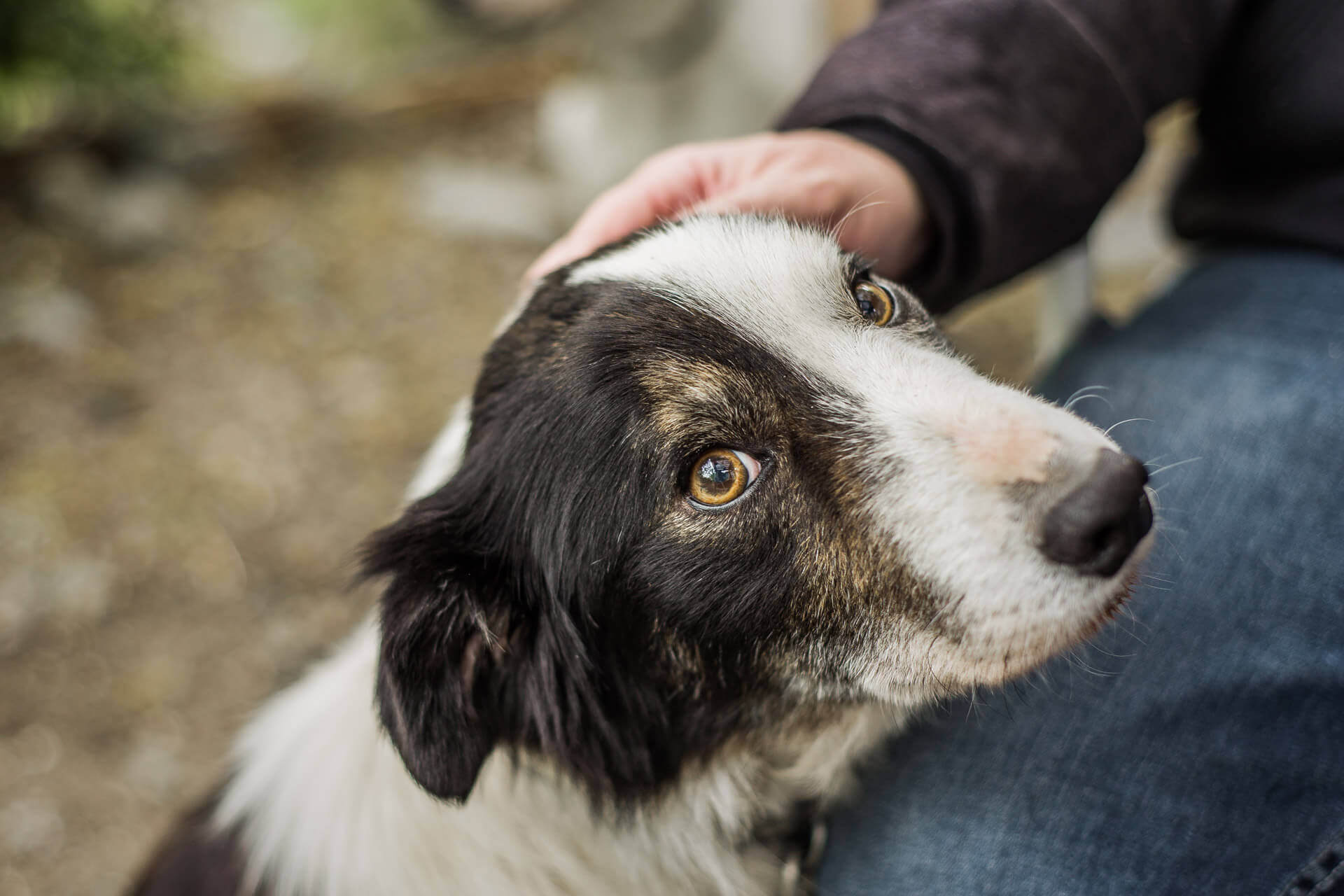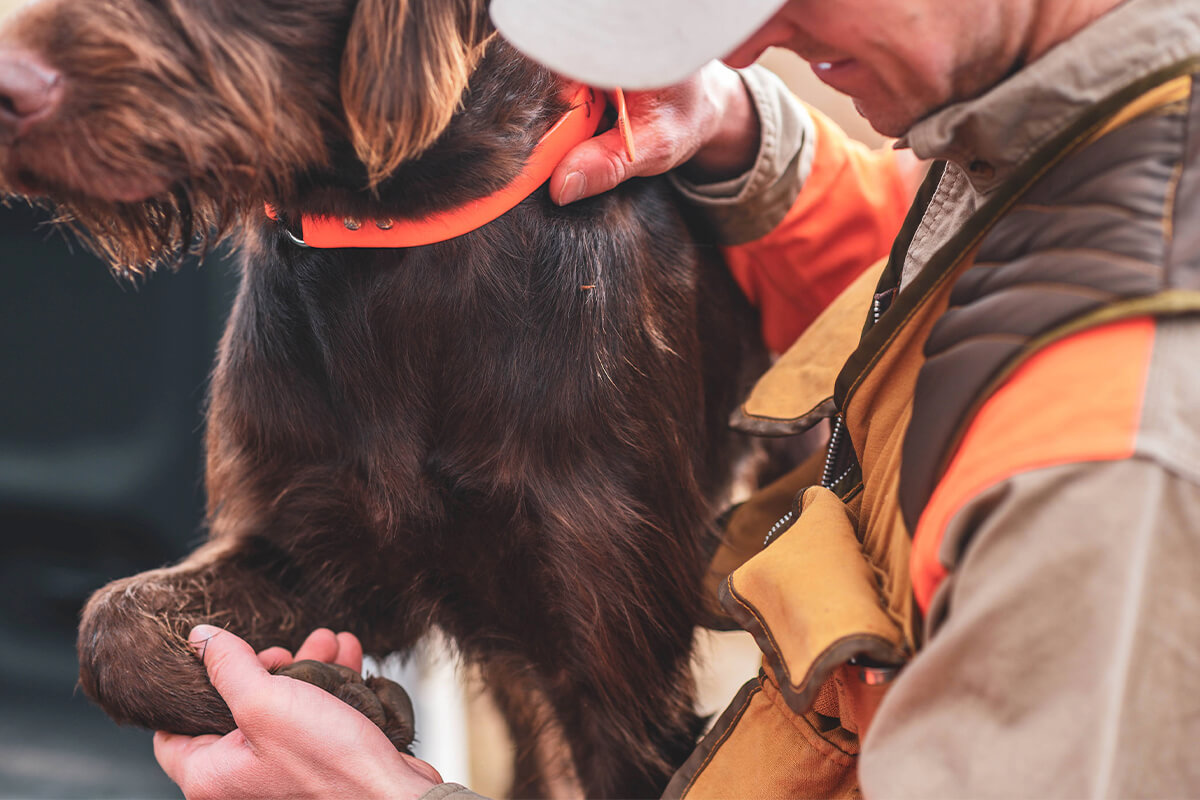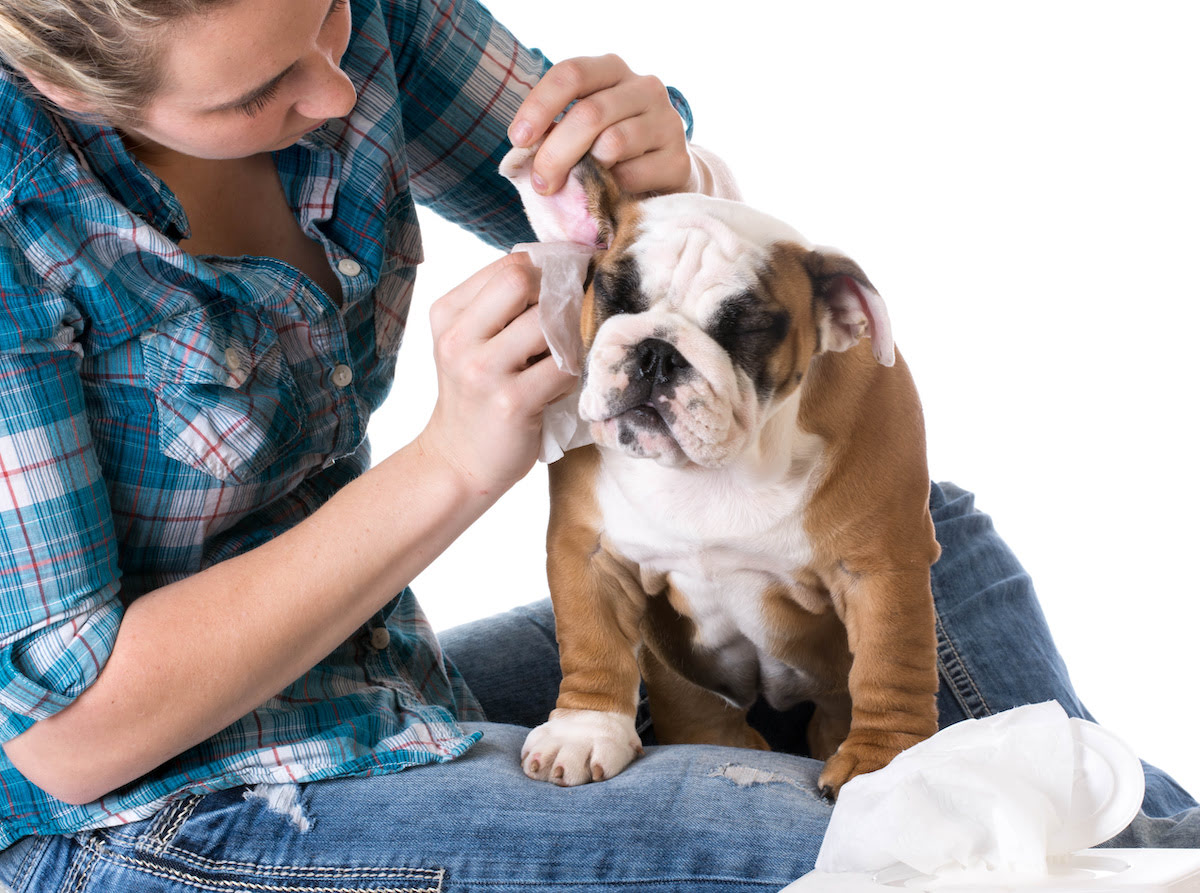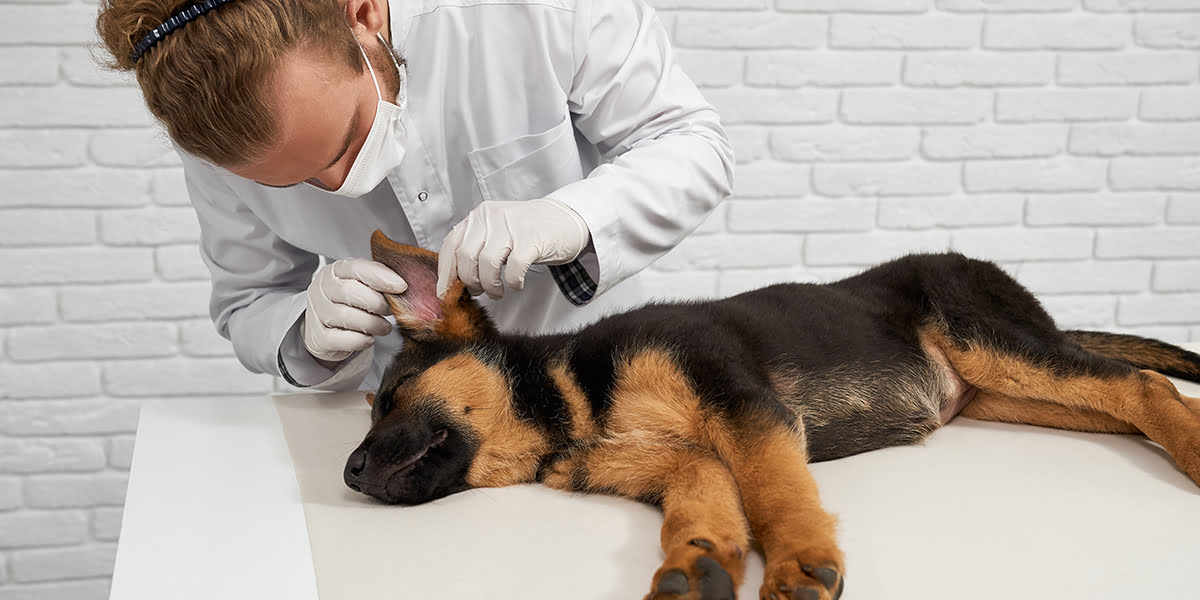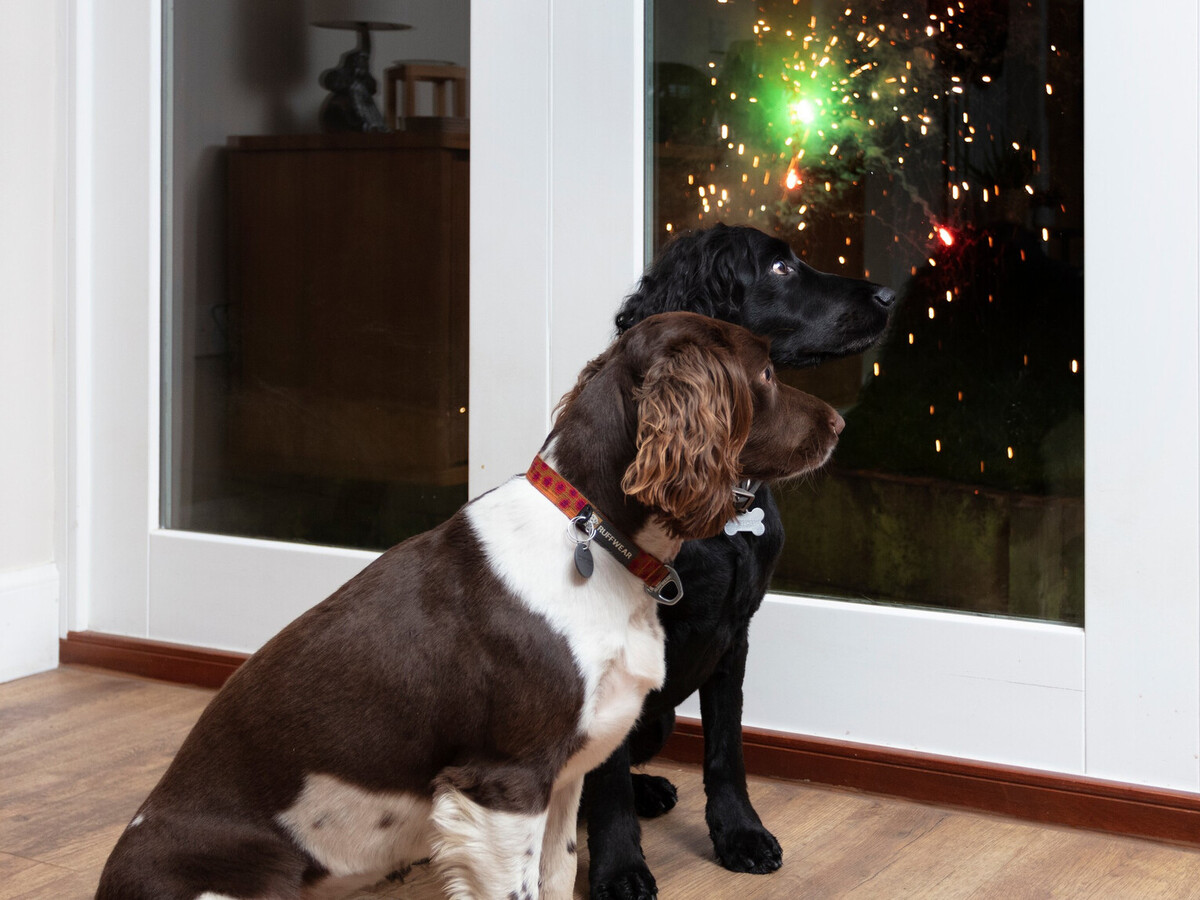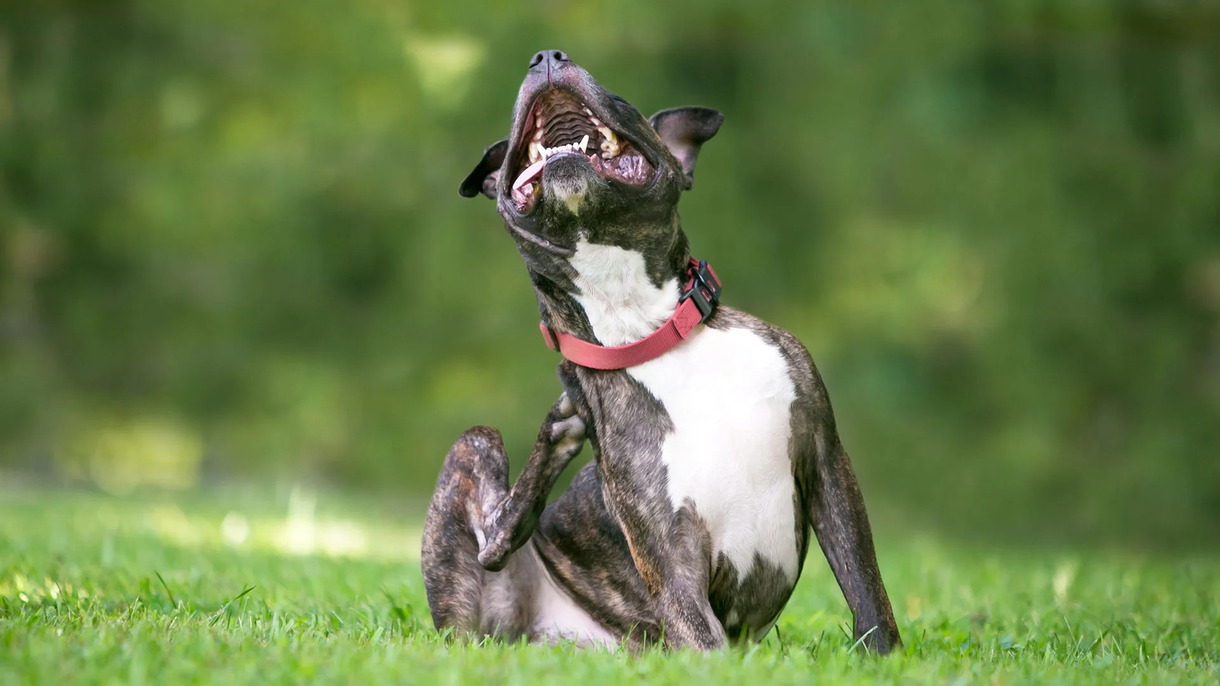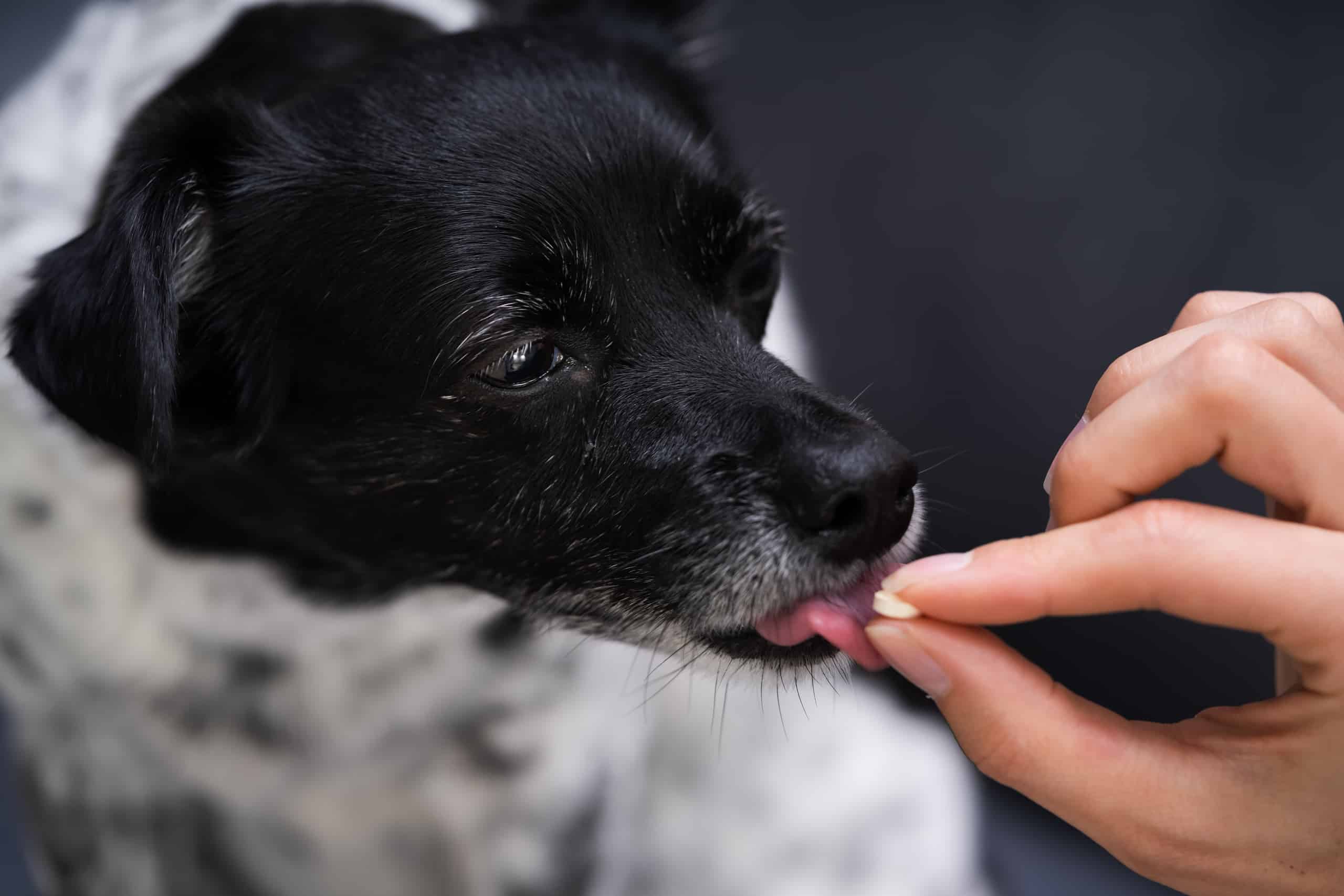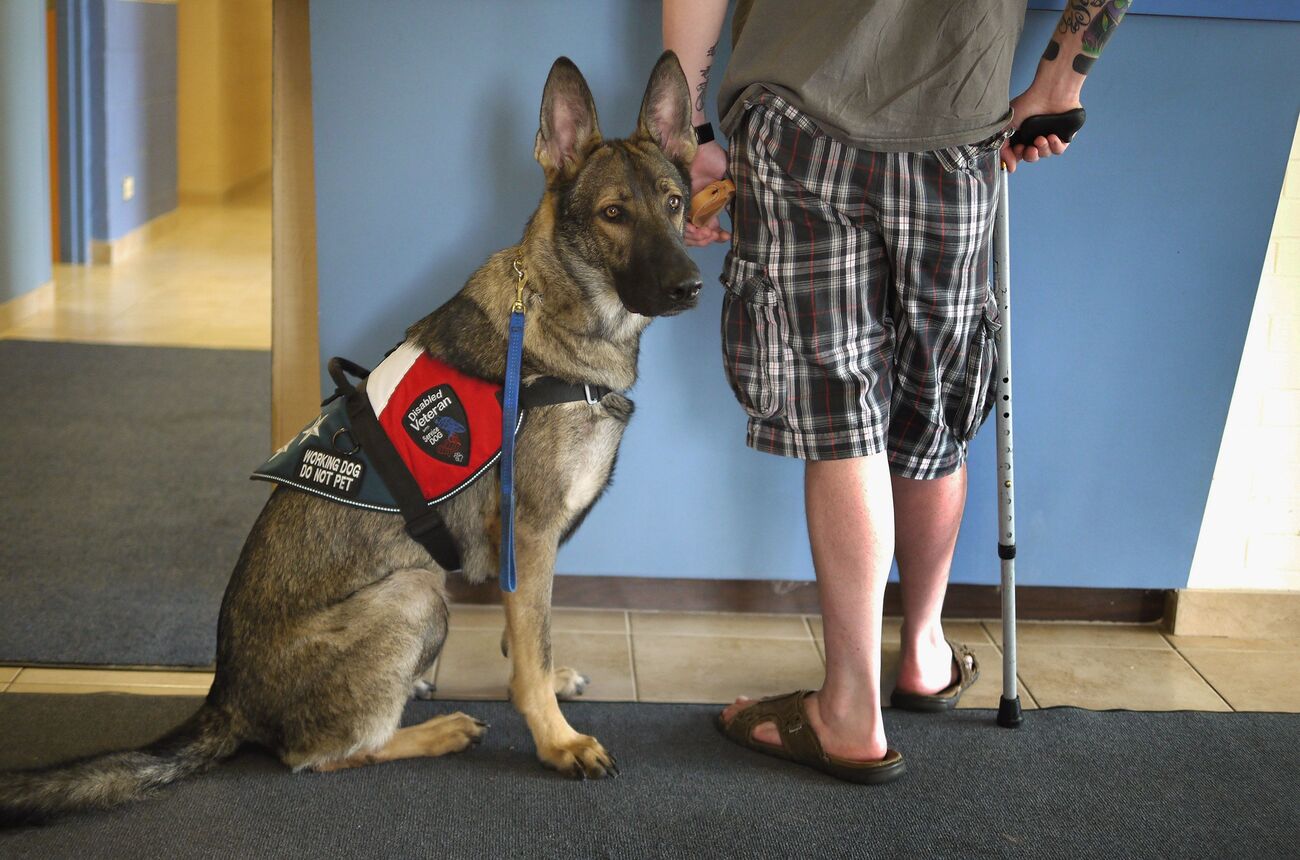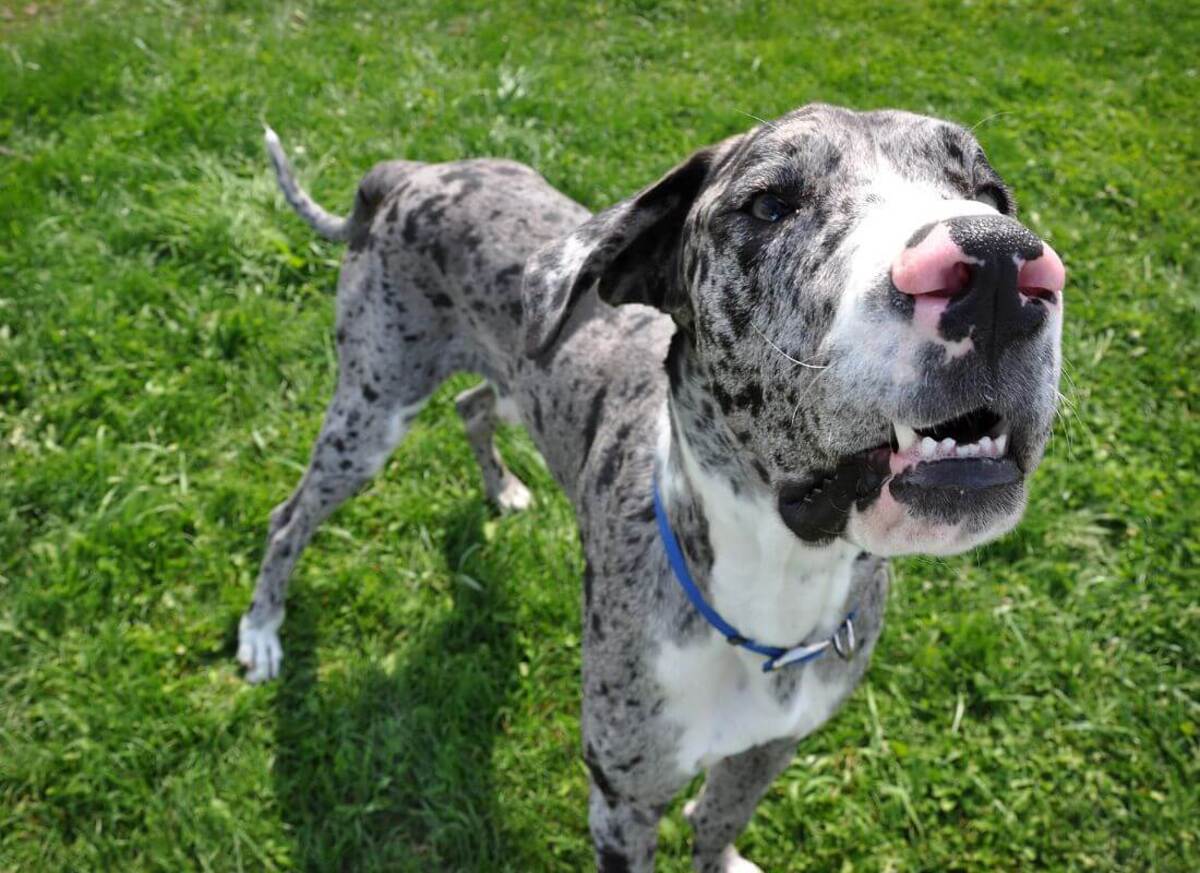Home>Health & Wellness>Behavior & Cognitive Care>How To Prevent Social Anxiety In My Dog


Behavior & Cognitive Care
How To Prevent Social Anxiety In My Dog
Published: January 30, 2024
Learn effective strategies for preventing social anxiety in your dog with behavior and cognitive care techniques. Help your furry friend feel more at ease and confident in social situations.
(Many of the links in this article redirect to a specific reviewed product. Your purchase of these products through affiliate links helps to generate commission for Pawsomeoldies.com, at no extra cost. Learn more)
Table of Contents
- Understanding Social Anxiety in Dogs
- Recognizing the Signs of Social Anxiety in Your Dog
- Tips for Preventing Social Anxiety in Your Dog
- Creating a Safe and Comfortable Environment for Your Dog
- Socializing Your Dog in a Positive and Controlled Manner
- Seeking Professional Help for Your Dog's Social Anxiety
Understanding Social Anxiety in Dogs
Social anxiety in dogs is a complex and often misunderstood condition that can significantly impact a dog's well-being. Just like humans, dogs can experience feelings of fear and unease in social situations, leading to a range of behavioral issues. It's crucial for pet owners to recognize the signs of social anxiety in their dogs and take proactive steps to address and prevent this condition.
Dogs with social anxiety may exhibit various symptoms, such as excessive barking, trembling, panting, or attempting to escape from the situation. They may also display avoidance behaviors, such as hiding behind furniture or seeking isolation when faced with unfamiliar people or animals. Additionally, some dogs may become destructive or exhibit aggressive tendencies when confronted with social stimuli that trigger their anxiety.
Understanding the root causes of social anxiety in dogs is essential for effective prevention and management. Factors such as lack of early socialization, traumatic experiences, genetic predisposition, or a history of negative interactions with humans or other animals can contribute to the development of social anxiety in dogs. Furthermore, changes in the dog's environment, routine, or family dynamics can also trigger or exacerbate social anxiety.
It's important to recognize that social anxiety in dogs is not simply a result of disobedience or a lack of training. Instead, it is a complex emotional response that requires empathy, patience, and understanding from pet owners. By acknowledging the emotional needs of their dogs, owners can take proactive measures to prevent social anxiety and create a supportive environment that promotes their pet's emotional well-being.
In summary, social anxiety in dogs is a multifaceted issue that can manifest in various ways. By understanding the signs and underlying causes of social anxiety in dogs, pet owners can take proactive steps to prevent and address this condition, ultimately fostering a happier and more emotionally balanced life for their beloved canine companions.
Read more: How To Prevent Fleas From Biting My Dog
Recognizing the Signs of Social Anxiety in Your Dog
Recognizing the signs of social anxiety in your dog is crucial for providing timely support and intervention. Dogs, like humans, can experience a range of emotions, including anxiety, especially in social situations. By being attuned to your dog's behavior and body language, you can identify potential signs of social anxiety and take proactive steps to address them.
-
Excessive Panting and Trembling: One of the common signs of social anxiety in dogs is excessive panting and trembling when they are exposed to unfamiliar people, animals, or environments. This physiological response indicates heightened stress and discomfort, signaling the need for a supportive and reassuring approach.
-
Avoidance Behaviors: Dogs with social anxiety may exhibit avoidance behaviors, such as hiding behind furniture, seeking isolation, or attempting to escape from social situations. These actions reflect their attempt to cope with overwhelming feelings of fear and unease, highlighting the need for a safe and secure environment.
-
Excessive Barking or Whining: When confronted with social stimuli that trigger their anxiety, dogs may resort to excessive barking or whining as a means of expressing their distress. This vocalization serves as a communication of their discomfort and should be acknowledged with empathy and understanding.
-
Destructive Behavior: Dogs suffering from social anxiety may engage in destructive behavior, such as chewing furniture, digging, or causing damage to property. These actions are often a manifestation of their emotional turmoil and should not be dismissed as mere disobedience.
-
Aggressive Tendencies: In some cases, dogs with social anxiety may display aggressive tendencies when they feel threatened or overwhelmed in social situations. This aggression serves as a defense mechanism and underscores the need for a compassionate and supportive approach to help them feel safe.
-
Body Language Cues: Paying attention to your dog's body language is essential for recognizing signs of social anxiety. Pinned-back ears, a tucked tail, dilated pupils, and a tense body posture are indicative of heightened stress and discomfort, signaling the need for a gentle and understanding response.
By being observant and attentive to these signs, pet owners can gain valuable insights into their dog's emotional well-being and provide the necessary support to alleviate social anxiety. Recognizing these signs is the first step towards creating a nurturing and empathetic environment that promotes their dog's emotional resilience and overall happiness.
Tips for Preventing Social Anxiety in Your Dog
Preventing social anxiety in dogs requires a proactive and empathetic approach aimed at fostering their emotional well-being and resilience. By implementing the following tips, pet owners can create a supportive environment that mitigates the risk of social anxiety and promotes their dog's overall emotional health.
-
Early and Positive Socialization: Introducing puppies to a wide range of people, animals, and environments in a positive and controlled manner is crucial for preventing social anxiety. Early socialization experiences help dogs build confidence, adaptability, and positive associations with various stimuli, reducing the likelihood of developing anxiety in social situations later in life.
-
Positive Reinforcement Training: Utilizing positive reinforcement techniques, such as rewards, praise, and encouragement, during training sessions can help build a dog's confidence and trust. By focusing on positive experiences and rewards, pet owners can create a supportive learning environment that fosters a sense of security and reduces the likelihood of anxiety-related behaviors.
-
Consistent Routine and Environment: Maintaining a consistent daily routine and providing a stable and secure living environment can significantly contribute to a dog's emotional stability. Predictability and stability in their daily lives can help alleviate stress and anxiety, providing a sense of security that is essential for preventing the development of social anxiety.
-
Physical and Mental Stimulation: Regular exercise, interactive play, and mental stimulation are essential for promoting a dog's overall well-being. Engaging in physical and mental activities not only helps alleviate stress and anxiety but also fosters a sense of confidence and resilience, reducing the susceptibility to social anxiety.
-
Create Safe Spaces: Designating a safe and comfortable space within the home where the dog can retreat to when feeling overwhelmed or anxious is crucial. This designated safe space provides a refuge where the dog can seek solace and relaxation, helping them cope with social stressors in a controlled and supportive manner.
-
Avoid Overwhelming Situations: Being mindful of a dog's comfort level and avoiding overwhelming social situations is essential for preventing the onset of social anxiety. Gradually exposing the dog to new experiences and stimuli at a pace that is comfortable for them can help build confidence and reduce the likelihood of developing anxiety-related behaviors.
By implementing these proactive measures, pet owners can play a pivotal role in preventing social anxiety in their dogs, ultimately fostering a sense of emotional well-being, resilience, and confidence in their canine companions.
Creating a Safe and Comfortable Environment for Your Dog
Creating a safe and comfortable environment for your dog is essential for promoting emotional well-being and preventing social anxiety. Dogs, like humans, thrive in environments that provide security, predictability, and opportunities for relaxation. By establishing a nurturing and supportive setting, pet owners can significantly contribute to their dog's overall happiness and resilience.
One of the fundamental aspects of creating a safe environment for your dog is ensuring that their living space is free from potential stressors and hazards. This includes providing a designated area for rest and relaxation, away from high-traffic areas and loud noises. Creating a cozy and quiet space where your dog can retreat to when feeling overwhelmed or anxious is crucial. This designated safe space serves as a refuge where the dog can seek solace and comfort, aiding in their ability to cope with social stressors in a controlled and supportive manner.
In addition to physical spaces, it's important to consider the overall atmosphere of the home. Maintaining a calm and positive ambiance through soothing background music, natural lighting, and comfortable temperatures can contribute to a sense of tranquility for your dog. Dogs are highly attuned to their surroundings, and a peaceful environment can help alleviate stress and anxiety, fostering a sense of security and emotional well-being.
Consistency and routine play a pivotal role in creating a safe and comfortable environment for your dog. Dogs thrive on predictability, and a consistent daily routine provides a sense of stability and security. Establishing regular feeding times, exercise routines, and designated quiet times for rest and relaxation can help alleviate anxiety and promote emotional balance. Furthermore, maintaining a stable living environment with minimal disruptions and changes can contribute to a dog's overall sense of security and well-being.
Ensuring that your dog has access to mental and physical stimulation is also crucial for creating a supportive environment. Interactive toys, engaging activities, and regular exercise not only provide outlets for energy but also promote mental stimulation and emotional fulfillment. A well-stimulated dog is less likely to experience feelings of anxiety and restlessness, contributing to a more emotionally balanced and contented pet.
By prioritizing the creation of a safe and comfortable environment for your dog, you can significantly contribute to their emotional well-being and resilience. This nurturing setting not only helps prevent social anxiety but also fosters a sense of security, confidence, and overall happiness in your beloved canine companion.
Socializing Your Dog in a Positive and Controlled Manner
Socializing your dog in a positive and controlled manner is a fundamental aspect of preventing social anxiety and fostering their emotional well-being. Proper socialization not only helps dogs acclimate to various stimuli and environments but also builds their confidence, adaptability, and resilience. By approaching the socialization process with empathy, patience, and a proactive mindset, pet owners can create positive experiences that mitigate the risk of social anxiety and promote their dog's overall emotional health.
The key to successful socialization lies in exposure to a diverse range of people, animals, sounds, and environments in a controlled and positive manner. Early socialization, especially during the critical developmental period of puppyhood, is crucial for shaping a dog's social behavior and emotional responses. Introducing puppies to new experiences gradually and ensuring that each interaction is positive and non-threatening sets the foundation for confident and well-adjusted adult dogs.
Positive reinforcement plays a pivotal role in socializing dogs effectively. Using rewards, praise, and encouragement during socialization experiences helps dogs associate new stimuli with positive outcomes, building their confidence and trust. Whether it's meeting new people, encountering unfamiliar animals, or exploring novel environments, the presence of positive reinforcement creates a sense of safety and reassurance for the dog, reducing the likelihood of anxiety-related responses.
Controlled exposure to various social stimuli is essential for preventing social anxiety. Pet owners should prioritize gradual introductions and controlled interactions, respecting their dog's comfort levels and providing support when needed. Monitoring the dog's body language and behavior during socialization experiences allows pet owners to gauge their dog's emotional state and intervene if signs of anxiety or distress arise. This proactive approach ensures that socialization remains a positive and enriching experience for the dog, contributing to their emotional resilience and well-being.
Additionally, seeking out structured socialization opportunities, such as puppy classes or supervised playgroups, can provide valuable social experiences in a controlled setting. These environments allow dogs to interact with peers under the guidance of experienced professionals, fostering positive social behaviors and promoting emotional confidence.
By socializing your dog in a positive and controlled manner, you can instill a sense of confidence, adaptability, and emotional resilience in your canine companion. This proactive approach not only prevents social anxiety but also cultivates a well-adjusted and socially adept dog, capable of navigating various social situations with confidence and composure.
Read more: How To Prevent Fleas From Dogs
Seeking Professional Help for Your Dog's Social Anxiety
Seeking professional help for your dog's social anxiety is a proactive and compassionate step towards addressing and managing this complex condition. While pet owners play a crucial role in creating a supportive environment and implementing preventive measures, the expertise and guidance of a qualified professional can provide invaluable support in addressing the underlying causes of social anxiety and formulating an effective treatment plan tailored to your dog's specific needs.
One of the primary avenues for seeking professional assistance is consulting a certified veterinary behaviorist or a qualified dog behavior specialist. These professionals possess specialized training and experience in understanding and addressing behavioral issues in dogs, including social anxiety. By conducting a comprehensive assessment of your dog's behavior, history, and environmental factors, they can identify the root causes of social anxiety and develop a personalized treatment approach.
Professional behaviorists or specialists can offer guidance on behavior modification techniques tailored to your dog's unique temperament and triggers. This may involve desensitization and counterconditioning exercises aimed at gradually exposing your dog to social stimuli in a controlled and positive manner, helping them build confidence and resilience. Additionally, they can provide insights into creating a structured and supportive environment that promotes emotional well-being and reduces anxiety triggers.
In some cases, professional help may also involve the incorporation of medication as part of a comprehensive treatment plan. Veterinary behaviorists or veterinarians with expertise in behavior management can assess the need for pharmacological intervention based on your dog's specific symptoms and response to behavioral interventions. Medication, when used in conjunction with behavior modification, can help alleviate the intensity of anxiety symptoms and facilitate the learning process during behavior modification exercises.
Furthermore, professional guidance extends to educating pet owners on understanding and interpreting their dog's body language, communication cues, and stress signals. This knowledge empowers owners to effectively support their dogs during social interactions and create a conducive environment for their emotional well-being.
It's important to approach seeking professional help with an open mind and a commitment to actively participate in the recommended treatment plan. Consistency, patience, and clear communication with the professional are essential for maximizing the effectiveness of the interventions and supporting your dog's progress towards emotional resilience and well-being.
By seeking professional help for your dog's social anxiety, you demonstrate a deep commitment to understanding and addressing your dog's emotional needs, ultimately fostering a happier and more emotionally balanced life for your beloved canine companion.
